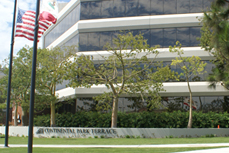California Supreme Court Affirms Use of Worker-Friendly Framework in Assessing Retaliation Claims
Jan 31, 2022On January 27, 2022, the California Supreme Court answered the Ninth Circuit’s certified question of California law in Lawson v. PPG Architectural Finishes, Inc., determining that trial courts must use the worker-friendly test established under California Labor Code section 1102.6 (§ 1102.6) to evaluate whistleblower retaliation claims.
.
Importantly, the test only requires employees to prove that retaliation contributed to an adverse employment action, such as a termination or demotion. The burden is then shifted to the employer to prove that they would have taken the same action for legitimate, independent reasons. Previously, California courts were largely split on whether to evaluate whistleblower retaliation claims with the § 1102.6 test, or a more stringent three-part test established by the United States Supreme Court. Learn more about the case and its implications for California businesses below.
.
Background
.
Plaintiff Wallen Lawson worked for defendant PPG Architectural Finishes, Inc. (PPG), a paint and coatings manufacturer, from 2015 until 2017. His performance as an employee was evaluated using two criteria: his ability to meet sales benchmarks, and his scores on “market-walks,” during which PPG managers, including his own manager, Clarence Moore, observed his interactions with his client’s staff and customers. In the Spring of 2017, after his market-walk scores dipped and he was unable to consistently meet his monthly sales targets, Lawson was placed on a performance improvement plan.
.
Around the same time that Spring, Lawson alleges that Moore ordered him to intentionally mistint slow-selling paints so that PPG could avoid buying back excess unsold products. Lawson openly refused to participate in Moore’s scheme, and filed two anonymous complaints with PPG’s ethics hotline, which triggered an investigation into Moore’s practices. While Moore was ordered to suspend this practice, he remained with PPG as Lawson’s direct supervisor.
.
Months later, after he was unable to meet the standards contained in his performance improvement plan, Lawson was fired. Lawson then filed suit, alleging that PPG fired him because he blew the whistle on Moore’s fraudulent practices, in violation of California Labor Code section 1102.5 (§ 1102.5).
.
The District Court’s Ruling
When evaluating Lawson’s claim, the District Court for the Central District of California used the three-part burden-shifting framework established by the United States Supreme Court in McDonnell Douglas Corp. v. Green. The three components of the McDonnell Douglas framework are as follows:
- 1. The employee must establish a prima facie case of unlawful discrimination or retaliation.
- 2. The employer bears the burden of articulating a legitimate reason for taking the challenged adverse employment action.
- 3. The employee then bears the burden of demonstrating that the employer’s preferred legitimate reason is a pretext for discrimination or retaliation.
Applying this framework, the district court ruled that, while Lawson established a prima facie case of unlawful retaliation based on his whistleblowing efforts, he was unable to provide sufficient evidence to satisfy the third step of the McDonnell Douglas test. As a result, he could not establish that the reasons given for his termination were pretextual. The court then granted summary judgement in favor of PPG.
.
The Ninth Circuit Asks the California Supreme Court to Clarify California Law
.
On appeal, Lawson argued that the district court should have instead applied the § 1102.6 test in assessing his claim. Under the § 1102.6 framework, Lawson would have only been required to prove that retaliation was a contributing factor in his termination, not that PPG’s stated reason for terminating his employment was pretextual.
.
The Ninth Circuit ruled that, while the outcome of Lawson’s case hinged upon which framework the court used, it was not clear which framework rightly applied. The Ninth Circuit then asked the California Supreme Court to determine which test should be used to evaluate retaliation claims brought under California’s § 1102.5.
.
The California Supreme Court Endorses Use of § 1102.6 Test
.
In a landmark decision, the California Supreme Court determined that § 1102.6 supplies the evidentiary standard for presenting and evaluating retaliation claims brought under § 1102.5. The § 1102.6 test places the initial burden on the plaintiff to prove, by a preponderance of the evidence, that retaliation in response to an employee’s protected activity contributed to a contested employment action. Importantly, the Court determined that the plaintiff is not required to satisfy the McDonnell Douglas test to fulfill this requirement. If the employee meets the initial burden, then the burden shifts to the employer to demonstrate that the employer would have taken the contested adverse action for a legitimate, independent reason even if the plaintiff had not engaged in protected activity.
.
The Court emphasized that the § 1102.6 framework was created to “encourage earlier and more frequent reporting of wrongdoing by employees…when they have knowledge of specified illegal acts” by bolstering “employee protection against retaliation.”
.
If you have questions regarding this article, please contact one of the following attorneys in The Maloney Firm’s Employment Law Department: Patrick Maloney, Lisa Von Eschen, or Samantha Botros.



